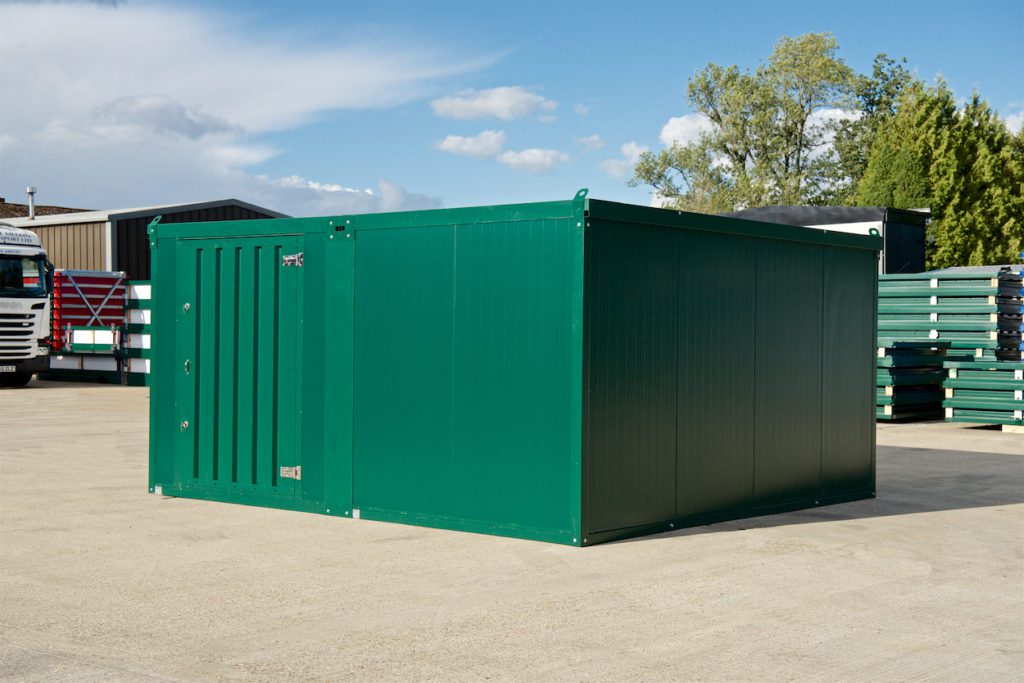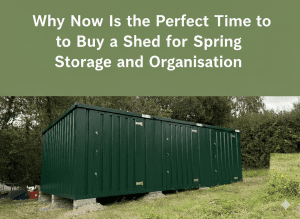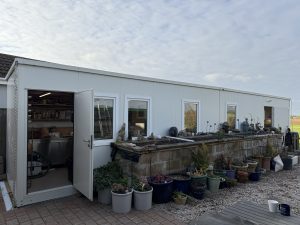Flatpack Container Vs. Used Shipping Container
Used shipping containers have become a common solution to storage problems for both domestic and commercial users. These structures have grown in popularity and today they are being used for everything from simple storage solutions to modern Air BnBs. So, what are the benefits of our XPanda range and why would we recommend that you use our products rather than used shipping containers?
In order to guarantee that the shipping containers are fit for use in transit they have to be CSC safety approved. What does CSC safety approved mean? Well, essentially every 30 months shipping containers undergo a quality check by an authorised inspector. This check will determine whether the container is fit for purpose, whether this is transporting goods across the high seas or putting them on the back of a cargo train. When users buy a used shipping container, what they are purchasing is a shipping container that has failed this quality check. Unfortunately, when these products are sold, purchasers are unable to find out the reasons why containers have failed the CSC inspection.
We love shipping containers, and we think they’re very useful to all that own them. However, we aren’t convinced that a used shipping container is the right solution for most people that buy them. That’s why we are the proud suppliers of our XPanda range of flat pack containers and buildings that we designed to tick every box that a used shipping container does and more.
Why pick a flat pack container over a shipping container?
If it’s hard to move, its expensive to move.
For starters, shipping containers are big, heavy, and expensive to move. This comes as no surprise though, as a run-of-the-mill 20 ft shipping container will weigh anywhere between 1.8-2.2 tonnes and require a crane or hiab (with access to the site). Our range of flat pack buildings and containers solves these problems by being able to move each component by hand to site. This is essential for places where access is likely to be via alleyways like London, or even back gardens where access is often way too tight to even think about using something like a shipping container.
The temperatures inside can be a problem.
Secondly, temperatures inside a shipping container can be a problem. As you’ll know, steel conducts heat very well, meaning in direct sunlight it’ll get very hot and vice versa in the shade. This is a bad idea for storing things that are sensitive to changes in humidity or temperature such as technology, wooden furniture or food. We solved this problem with our flat packed XPandaStore by making a simple “snap in” insulation kit that you could install into your existing unit in around 10 minutes. After we found the need/want for insulated units was higher than we anticipated, we redesigned the XPandastore to have fully insulated wall and roof panels straight out of the factory so they look and function even better.
The possibility of rust and corrosion
If you’re thinking of repurposing or converting your old shipping container, you need to be aware of the fact they require a lot of maintenance. They are not corrosion or rust proof at this point, and perform best in a moderate climate with little rainfall. Our flat pack containers and cabins are fully galvanized and waterproof so you don’t need to worry about corrosion. You’ll not need to lift a finger to maintain your flat pack container either to make sure it stays rust free and waterproof.
Be aware of toxic exposure when repurposing
Most shipping containers will need to be treated with multiple insecticides to meet the global import and export regulations and procedures. If you plan on converting your shipping container to an office space or work space, you could face toxic exposure. Of course, you don’t want to risk your health or anyone else’s, so it’s strongly recommended you remove the containers wooden floor where these insecticides can harbour. Our XPanda range of buildings however, are not exposed to any insecticides of any sort as they don’t need to be.

More Stories From Us...

Why Now Is the Perfect Time to Buy a Shed for Spring Storage and Organisation

Beat the School Budget Rush: Why Pre-Ordering Now Saves You Stress (and Cash) Later

